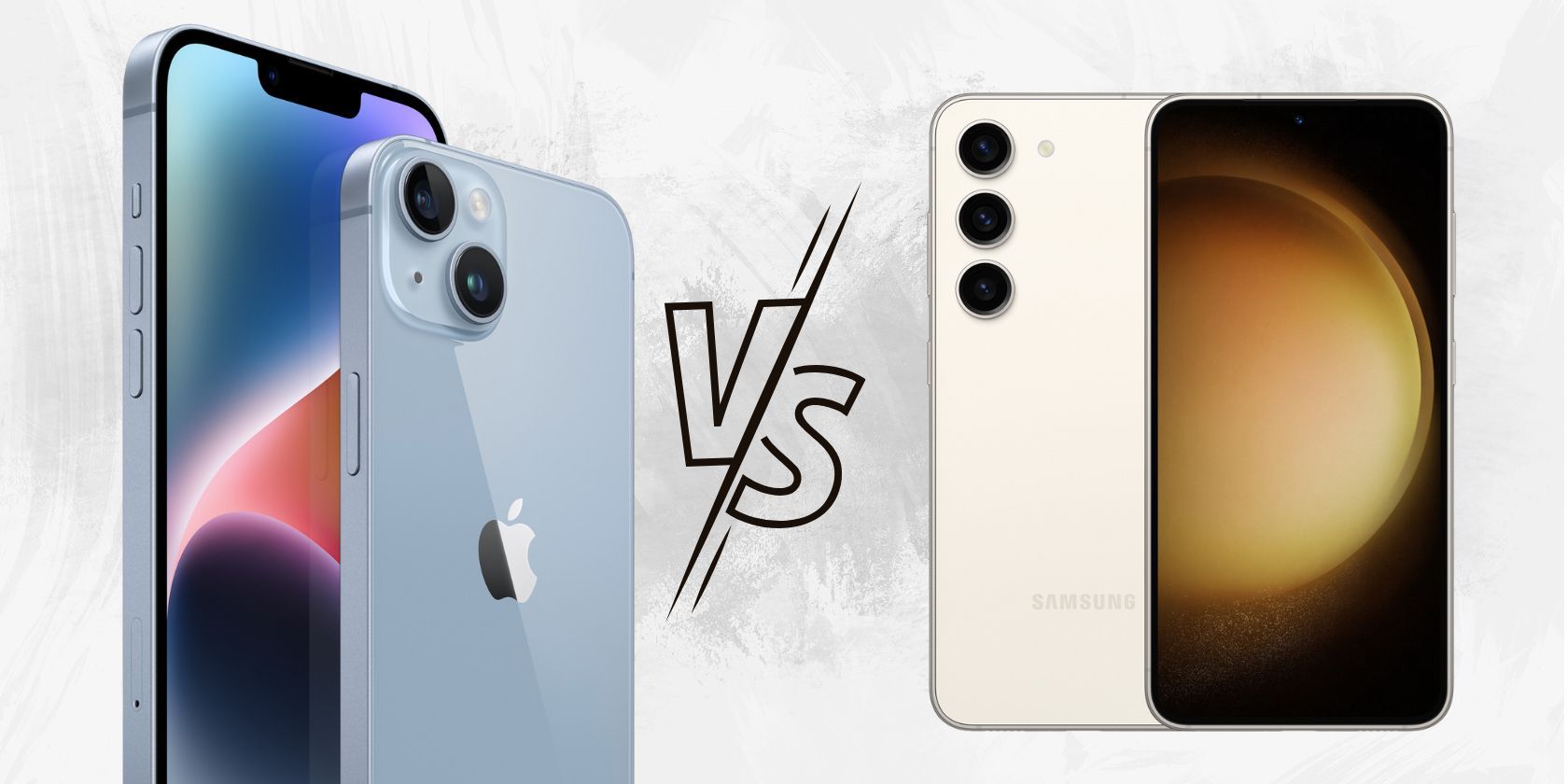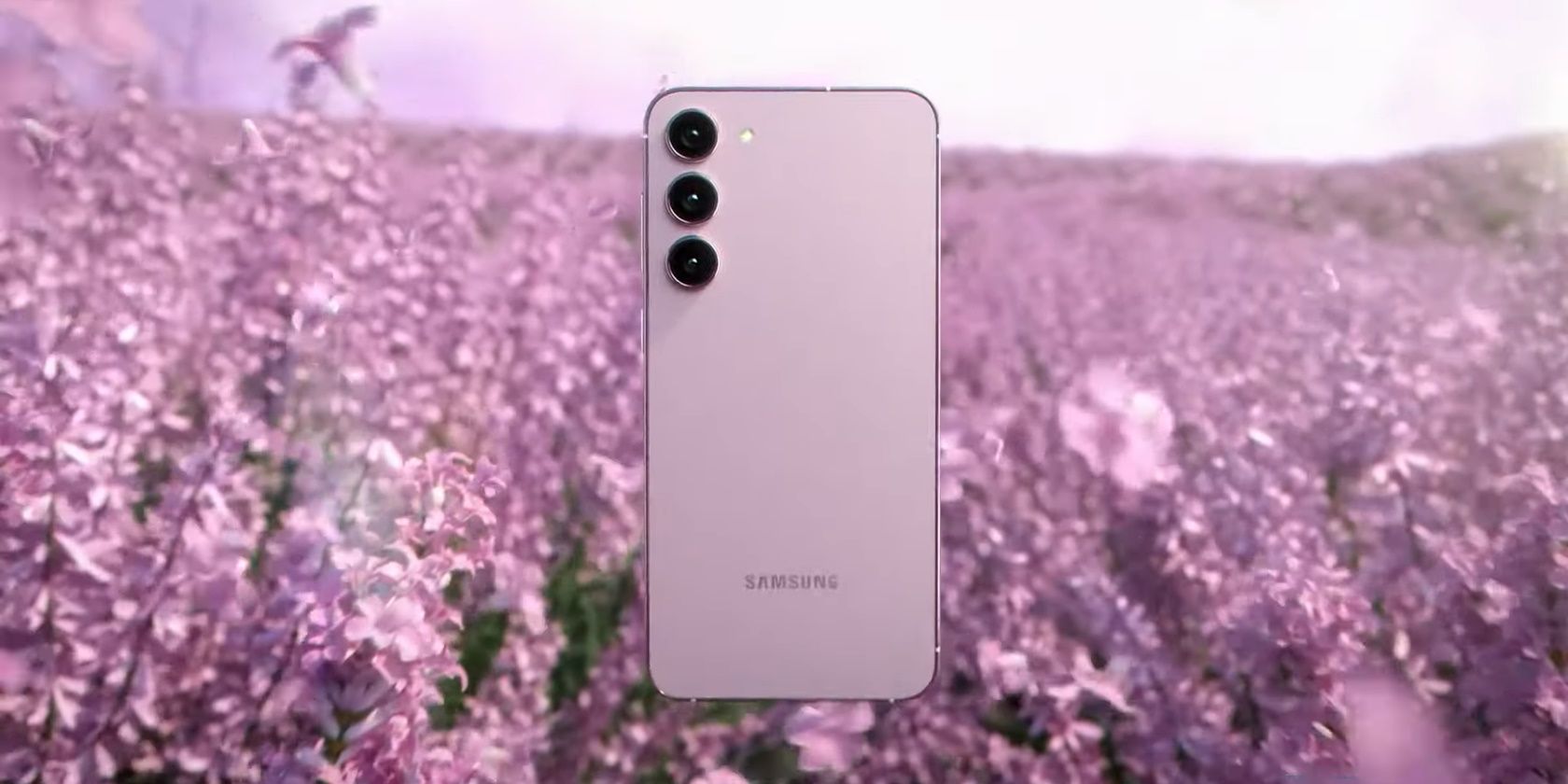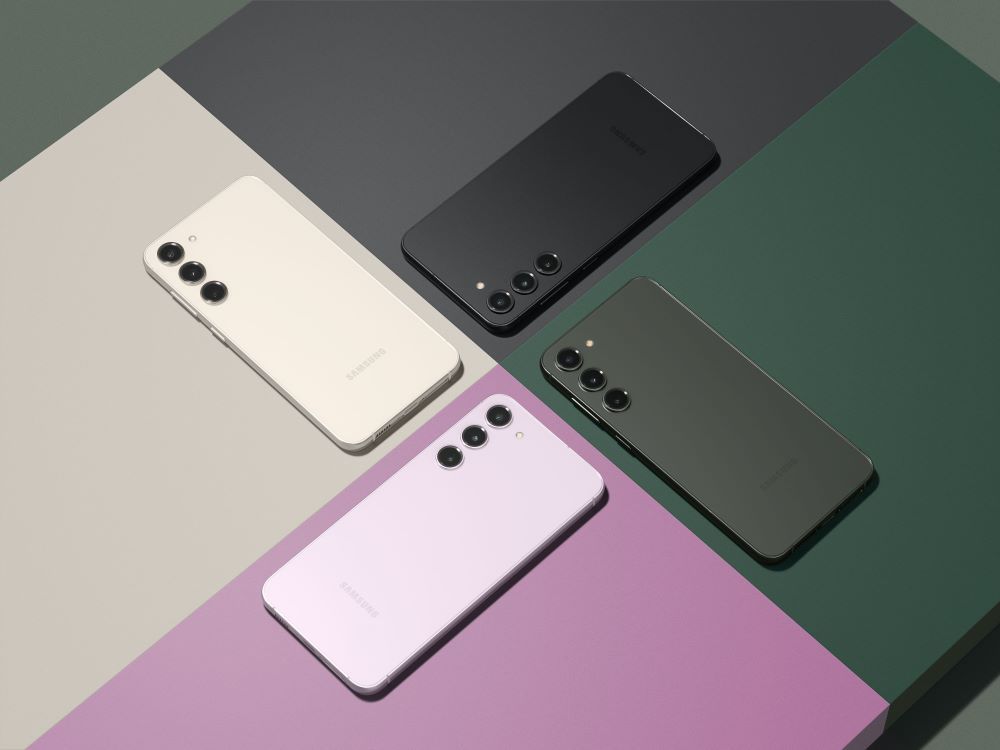Samsung's Galaxy S23 lineup is here to take on the iPhone 14. Of all the models in Samsung's lineup, the entry-level Galaxy S23 is the one that competes with the regular iPhone 14. Both are compact phones with reasonable price tags, powerful internals, and a competent camera setup.
If you want a new phone, what should it be: the Galaxy S23 or iPhone 14? Find out in our comparison below.
Design
- Samsung Galaxy S23: 5.76 x 2.79 x 0.3 inches | 5.93 ounces
- iPhone 14: 5.78 x 2.82 x 0.31 inches | 6.07 ounces
Samsung and Apple's offerings follow the same design language as their predecessors with some minor tweaks. The iPhone 14 looks similar to the iPhone 13 but has a 30 percent smaller notch. As for the Galaxy S23, it looks similar to the S22 but now uses more durable Gorilla Glass Victus 2 protection.
Unlike the iPhone 14, the S23 does not have a notch up front. Instead, it houses a punch-hole for the selfie camera. The phone relies on an in-display ultrasonic fingerprint scanner for biometric authentication, while the iPhone 14 uses Face ID. The two phones are IP68 dust and water resistant.
You can get the Galaxy S23 in Phantom Black, Cream, Green, or Lavender colors. Apple offers the iPhone 14 in six colors: Blue, Purple, Midnight, Starlight, (Product)Red, and Yellow. Check out our guide on which iPhone 14 color is best for you if you are torn between Apple's options.
Display
- Samsung Galaxy S23: 6.1-inch, Dynamic AMOLED 2X, 48–120Hz dynamic refresh rate, 425ppi, 1,750 nits peak brightness, HDR10, Gorilla Glass Victus 2
- iPhone 14: 6.1-inch, Super Retina XDR (1170x2532), 60Hz OLED display, 460ppi, 1,200 nits peak brightness, HDR10, Ceramic Shield
The Samsung Galaxy S23 and iPhone 14 offer the same display size. However, the S23's display specs are better in almost every other aspect: it supports a dynamic refresh rate of up to 120Hz and has a higher peak brightness. Thanks to the higher refresh rate, Samsung's offering will feel smoother to use in daily life.
Looking beyond these differences, the two phones each pack excellent displays, and you can't really go wrong with any of them. They get plenty bright enough in direct sunlight, are protected by a durable cover glass, and have HDR support.
Performance
- Samsung Galaxy S23: Snapdragon 8 Gen 2 "For Galaxy," 8GB RAM, 128/256GB storage
- iPhone 14: A15 Bionic, 6GB RAM, 128/256/512GB storage
Samsung uses a special version of Qualcomm's latest and greatest Snapdragon 8 Gen 2 chip inside the Galaxy S23. This 4nm chip promises a 30 percent bump in CPU and a 40 percent increase in GPU performance while being more power efficient compared to previous generations. The iPhone 14 uses the six-core GPU variant of the A15 Bionic, which Apple first used on 2021's iPhone 13 Pro. Despite being an older chip, the A15 Bionic can hold its own against the Snapdragon 8 Gen 2.
Samsung and Apple phones are extremely fast, and you won't encounter any performance issues. Do note that Samsung is using slower UFS 3.1 NAND on the 128GB variant of the Galaxy S23. So, consider upgrading to the 256GB model for better performance.
The iPhone 14 also has Emergency SOS via Satellite, which can come in handy for some users. The Galaxy S23 offers no such similar feature.
Camera
- Samsung Galaxy S23: Primary: 50MP f/1.8, OIS; Ultra-Wide: 12MP f/2.2; Telephoto: 10MP f/2.4; Night Mode, Director's View, Portrait Video
- iPhone 14: Primary: 12MP f/1.5, Sensor-Shift OIS, 100% Focus Pixels; Ultra-Wide: 12MP f/2.4; Sapphire Crystal Lens, Photonic Engine, Cinematic Mode, Night Mode, Photographic Styles
Samsung's offering has a more versatile camera setup. The Galaxy S23 features a primary 50MP f/1.8 camera with OIS, a 12MP f/2.2 ultra-wide, and a 10MP f/2.4 shooter with 3x optical zoom. In comparison, the iPhone 14 has dual rear cameras, including a 12MP f/1.5 shooter with sensor-shift OIS and a 12MP f/2.4 ultra-wide.
Thanks to the 3x optical zoom sensor, the S23 will perform better at taking photos with 3x or higher zoom. This versatility will also help creative juices flow more freely. Samsung has equipped the Galaxy S23 with a 12MP f/2.2 selfie camera, while the iPhone 14 houses a 12MP f/1.9 front camera in its notch. Both selfie shooters support autofocus for better sharpness and clarity.
As for video recording, the Galaxy S23 can record 8K videos at 30fps from the primary camera. Its other cameras, including the selfie shooter, can record 4K videos at 60fps. While the iPhone 14 tops out at 4K, it can record (and edit) videos in Dolby Vision for stunning quality.
Battery Life and Charging Speed
- Samsung Galaxy S23: 3,900mAh, USB-C Port, 25W charging speed, 15W wireless charging
- iPhone 14: 3,279mAh, Lightning Port, 20W charging speed, 15W MagSafe wireless charging
Despite the similar size, the Galaxy S23 packs a bigger 3,900mAh battery. It does pack more power-hungry components, including a high refresh rate display. Despite that, the entry-level S23 should last longer than the iPhone 14. The difference won't be big enough since Apple is known to optimize its products to deliver the best battery life possible. Both phones can make it through a day of use with moderate use.
The Galaxy S23 can charge at a faster 25W speed vs. the iPhone 14's 20W wired. You can top up the Galaxy's battery to full in around 70 minutes, but the iPhone 14 will take much longer despite a smaller battery. The two phones also support 15W wireless charging, with the S23 capable of reverse wireless charging other devices at 4.5W.
Samsung and Apple don't bundle a power adapter with their phone, so consider buying one of the best USB-C chargers if you are in the market for one.
Price
- Samsung Galaxy S23: Starts from $799
- iPhone 14: Starts from $799
The starting price of the Samsung Galaxy S23 and the iPhone 14 is the same in the US, making them direct competitors. Given the similar price, it isn't easy to decide between the two phones solely. You can get the S23 for a lower price if you take advantage of your carrier's trade-in offer or order it directly from Samsung's website.
Samsung Galaxy S23 vs. iPhone 14: Which One Should You Buy?
The answer to the above question is more complex than you think. More than price and specs, it depends on what operating system you prefer to use: Android or iOS. If you have been a long-time iPhone user, you might not like the One UI experience. In that case, consider sticking to the iPhone 14.
If you are frustrated with iOS and want to explore Android, the Galaxy S23 can be your ideal first device. And if you already use an Android phone, you won't regret switching to the S23.





